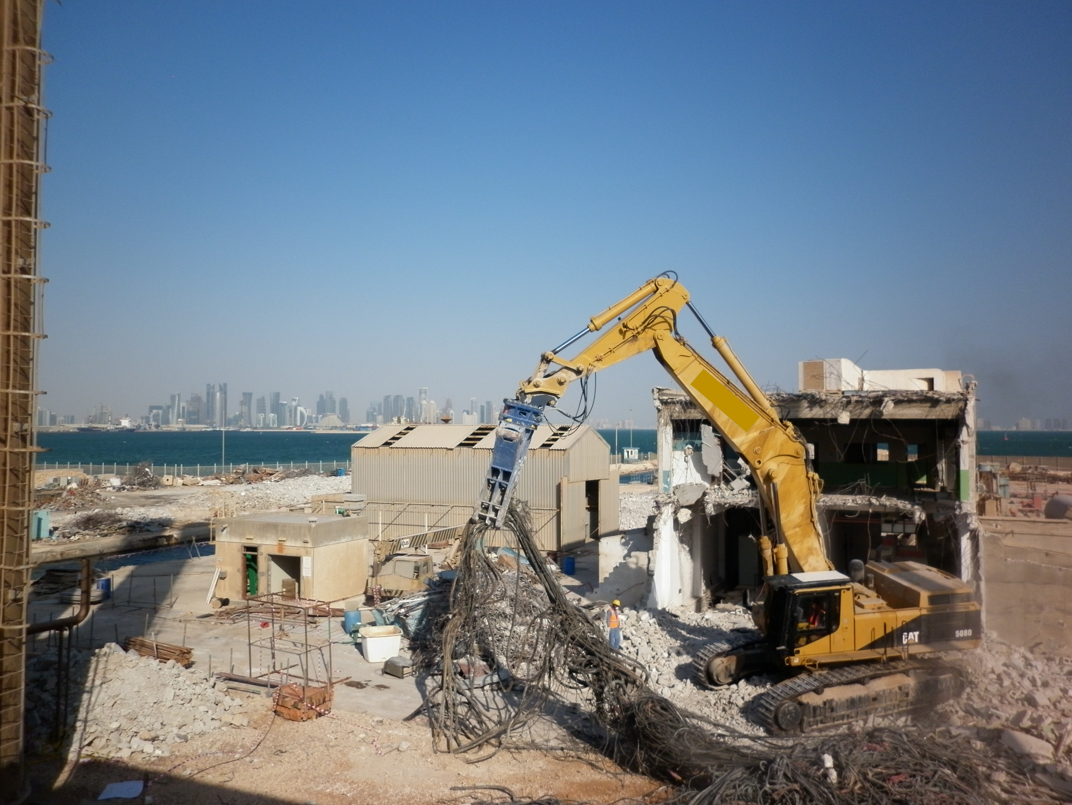Uncontrolled Demolition
Asbestos is only a problem if you damage or disturb it and when the fibres can become airborne and be inhaled. If an Asbestos Containing Material (ACM) in a good condition or is a non-friable material and unlikely to be disturbed, then it may pose little risk.
Conversely, one of the worst things you could do to Asbestos is to demolish it without any control measures in place. This can lead to excessive fibre release and Asbestos exposure to those involved in the demolition works, and anyone within the vicinity.
Uncontrolled demolition, typically by use of an excavator, is something that still occurs in the Middle East. When this type of site clearance takes place, it is unusual for any Asbestos related control measures (such as wetting down, use of specialist Asbestos removal equipment and personal protective equipment) to be used. Occasionally these events are reported in the local newspapers (e.g. The National ‘Deadly dust: Dubai residents fear asbestos exposure’ August 2013), but typically they go unnoticed and unpunished.
Not only are the demolition team at risk, but also members of the public, and anyone who is likely to handle the contaminated material on its way to a waste disposal site. At each stage, where the Asbestos material is handled, it can lead to potential exposure. Additionally, if Asbestos has not been identified at the outset, then it is highly likely that the Asbestos waste will end up in a non-hazardous waste landfill site – or a construction and demolition waste landfill. This again increases the likelihood for the Asbestos material to be handled again (used for aggregate, road construction and other infrastructure projects carried out in the public and private sectors).
Identifying and safely removing Asbestos is key prior to demolition works, to ensure that human health is protected against Asbestos exposure throughout the site clearance process. So, what is the best means of conducting this?
Inspection and Testing
Prior to demolition, a refurbishment/demolition survey must be carried out by a competent party or registered Asbestos Supervising Consultant (ASC). In the case of demolition, it is always almost the case that ACMs will need to be removed.
Asbestos Abatement
Asbestos removal should be carried out by a specialist and registered Asbestos Removal Contractor (ARC) under the supervision of an ASC.
Independent Validation
Depending on the type of Asbestos identified, Asbestos air monitoring and independent validation may be necessary, which again should be carried out by a certified and registered ASC.
Asbestos Waste Disposal
Asbestos waste should only be disposed of in a facility that is capable of receiving Asbestos waste. These are typically government run facilities, and require permits and approvals for Asbestos waste disposal.
If you have any Asbestos related concerns, contact us to see how Anthesis Consulting Middle East can help you:
Charles Faulkner (Head of Environment, Health and Safety and Asbestos Team Leader)
Phone: +971 (0) 50 5541 320
Email: asbestos@anthesisgroup.com

